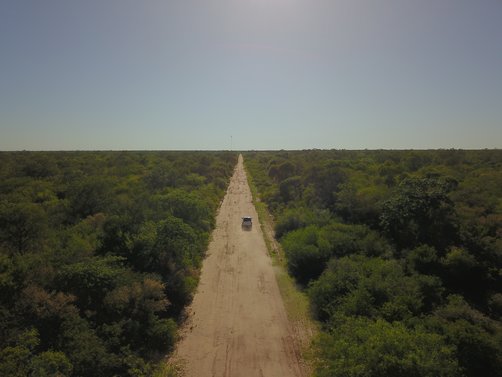TLDR:
- GainForest uses the transparent nature of Solana to power a dashboard of verifiable, trackable donations that ensure donors reach the local people maintaining forests directly.
- Using on-chain metadata, donors can track how healthy the area they support is with real-time updating “NFTrees.”
- Solana is a carbon-neutral chain that uses minimal energy, and the Solana Foundation has been issuing transparency reports on the network’s environmental impact since 2021.
Humans don’t devastate rainforests out of spite: they’re driven by economic pressure.
GainForest is hoping to change those incentives using the power of the blockchain. A Regenerative Finance (or ReFi) project, GainForest enables private donors large and small to confidently contribute to projects that protect — and even help rehabilitate — the planet. Simultaneously, the open platform ensures that Indigenous communities receive prompt and fair compensation for doing the physical labor of planting and stewarding trees. To power this environmentally-minded mission, the team built on top of Solana, an energy-efficient blockchain that enables the power of decentralized smart contracts with a minimal impact on the environment.
GainForest, as its name implies, focuses on fighting deforestation. Agriculture, forestry, and other land use (AFOLU) is a key driver of climate change, accounting for 23% of human greenhouse gas emissions from 2007 to 2016. Logging, slash-and-burn agriculture, and other rainforest-destroying practices can release carbon into the atmosphere, threaten biodiversity, erode soil, and even contribute to the spread of disease by driving wildlife closer to human population centers.
That’s where climate policies such as payments for ecosystem services (PES) come in. Corporations and individuals can donate money to projects that provide financial incentives to farmers, landowners and other locals for helping to plant new trees and protect existing flora, often as a means of receiving carbon offset certificates. The problem with PES, says GainForest’s Facundo Cajén, is a lack of consistency and transparency in how much of the money makes it to conservation projects. Calculating and tracking the actual emissions reduction associated with each donation is also incredibly complicated, and enables manipulation and even fraud: In 2023, investigative reporters discovered that 90% of rainforest offset credits approved by Verra, the world’s leading carbon standard for the voluntary offsets market, had no connection to actual deforestation efforts.
GainForest tackles those issues with the help of web3, making it possible for anyone — individuals and corporations alike — to donate to verifiable ecological improvements all over the world, including in small scale-landowners or indigenous communities. GainForest's blockchain-powered smart contracts on Solana to reward Indigenous farmers and other community members for protecting and reviving endangered areas of rainforest, giving them a financially viable option for choosing to preserve their land over logging and other destructive practices. Smart contracts eliminate the need for an intermediary broker, allowing for self-executing transactions that verify and track each step of the reforestation process and automate trust. For example, a GainForest smart contract might promise payouts for each verifiable tree planted and each confirmed image of a sapling’s progress, or for confirmation that an existing area of forest is continuing to thrive. GainForest automates the verification of on-the-ground data input, such as recorded measurements and drone photos, with more reliable but lower-resolution resources such as NASA satellites.

The GainForest team on site at one of the test sites. Courtesy GainForest.
Once farmers and other local shareholders meet the reforestation milestones they’ve agreed to hit — confirmed seamlessly on the blockchain using AI algorithms fed with drone data, satellite imagery, conservation photography, wildlife cams and more — they automatically receive the payouts they’ve been promised, which are already sitting safe in a dedicated fund on the Solana network. Because smart contracts are capable of self-execution, there’s no need for the expense — or bias — of a bank to facilitate the process. Meanwhile, private stakeholders can see and track the exact impact of their donations.
Reflecting real-time data with digital trees
GainForest provides more than just access to all the raw data associated with its projects and transactions. Its users also receive Solana-powered “NFTrees” to tokenize their investment in the earth. Fed with the same metadata that triggers payouts for shareholders on the ground, these dynamic impact certificates provide a nearly-real time visual of how a protected forest is doing. NFTree owners might open their wallets to see a thriving patch of land, a tree parched by drought, or even an area destroyed by wildfire. NFTree holders also get drops of digital incentives like wildlife camera videos, which show them the animals that are thriving in the areas they’ve helped protect. It’s a tangible reminder of the exact impact of a user’s individual donation, turning the opaque world of carbon markets on its ear.
After rolling out forest-protection incentives for landowners in Paraguay, GainForest kicked off its second pilot project in the Philippines. It utilizes a concept they’re calling “measure to earn,” explains Cajén, who serves as GainForest’s Director for Latin America. GainForest worked with a corporate donor that wanted to get mangrove trees planted, but also wanted to improve the quality of available data on mangroves for conservation scientists to work with. GainForest trained locals in how to plant saplings, take useful photos of existing trees, and track it all using the blockchain.
“Before getting into the forest, everybody got an address on the blockchain that was linked to their identity,” Cajén says. Then they just needed to go out and take photos using Tree App. Once they returned to an area with internet connectivity, GainForest’s AI would analyze their snapshots and metadata to confirm location, tree species, and growth. “When everything checked out, then all that information got uploaded to the blockchain,” Cajén says. “Everything they did — planting, measuring, checking in on trees — had a price attached to it. And so the minute everything was verified, money from that main project account was being released to their wallets.”

Courtesy GainForest.
In February, GainForest announced the successful mapping of 3,000 trees — each with its own attached GPS data, photos and species ID. “It’s like Google Maps for mangroves,” Cajén jokes. As GainForest continues to bring new projects onto the platform, their hope is to eventually provide not just the simplest solution for incentivizing reforestation efforts, but also the best and most accurate maps and databases for scientists looking to study conservation.
As far as the team at GainForest is concerned, the concept of an NFTree wouldn’t be viable without a blockchain as sustainable as Solana. Since the Solana Foundation began tracking the carbon footprint of the Solana blockchain in 2021, the protocol has shown it to be an energy-efficient option for using decentralized technology. In fact, when Cajén first met GainForest co-founder David Dao at the annual meeting of the World Economics Forum in 2022, he says, it was because of their mutual enthusiasm for Solana.
“The two of us just happened to sit down next to each other and start going nuts about how efficient Solana is,” Cajén recalls. He quit his job to join the GainForest team soon after.
Learn more about the Solana network’s impact on the climate.
Want to keep up to date on the latest news in the Solana ecosystem? Sign up for the monthly community update.